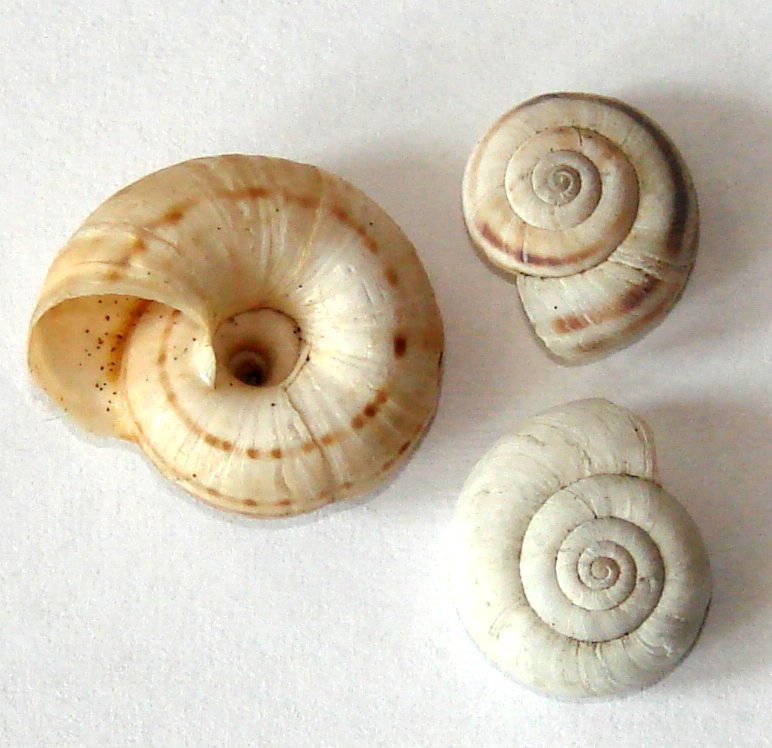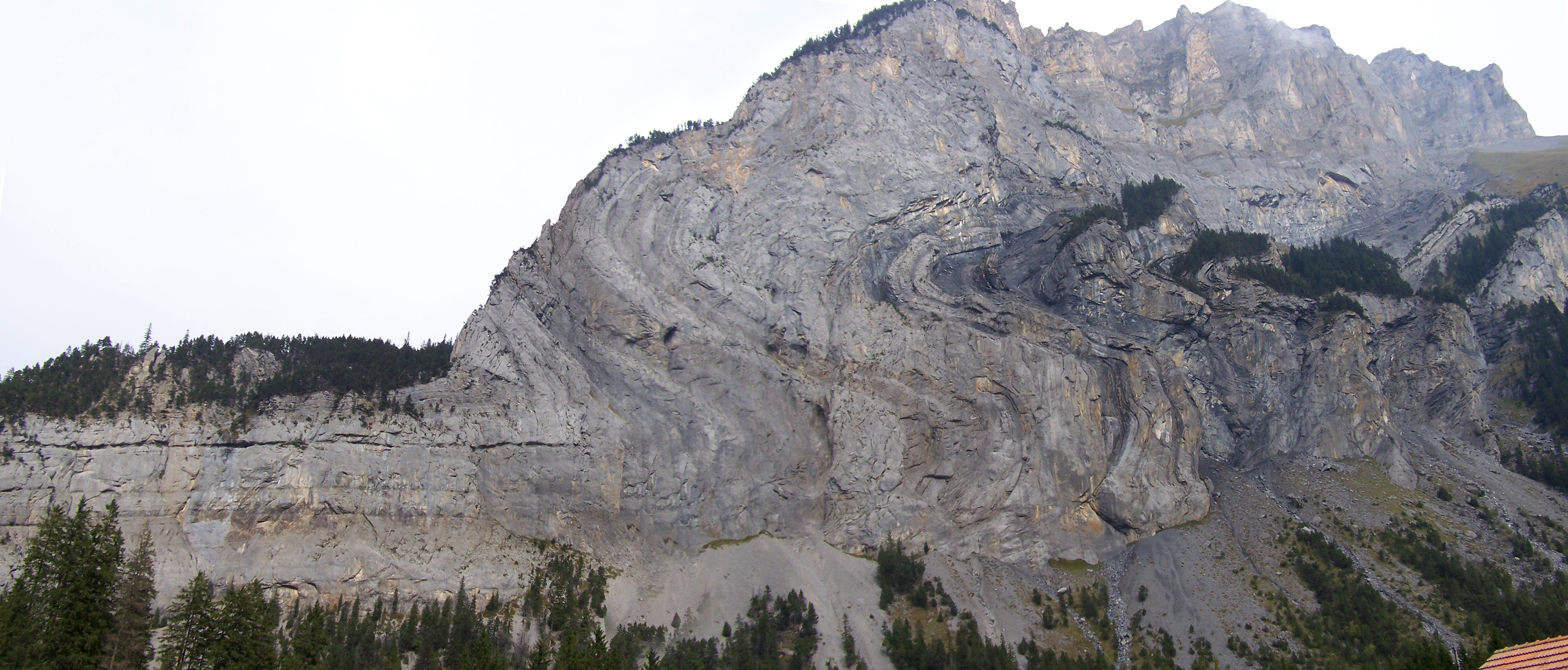|
Amaltheus
''Amaltheus'' is an oxyconic ammonite with a fairly open umbilicus, serrated keel, and slightly sigmoidal ribs from the Lower Jurassic, many of which are strigate. ''Amaltheus'', named by de Montfort, 1808, is indicative of the upper Pliensbachian The Pliensbachian is an age of the geologic timescale and stage in the stratigraphic column. It is part of the Early or Lower Jurassic Epoch or Series and spans the time between 192.9 ±0.3 Ma and 184.2 ±0.3 Ma (million years ago). The Plie ... stage in Europe, north Africa, Caucasus, Siberia, N. Alaska, Canada, Oregon, and possibly Honduras; and is the type for the Amaltheidae and a member of the Eoderoceratoidea. Two subgenera are recognized. One, ''A.(Amaltheus)'' is already described. The other ''A. (Pseudoamaltheus)'', sometimes expressed as genus, is a late derivative of (''Amaltheus'') with an early loss of keel and ribbing and an extreme development of strigation. References ;Notes ;Bibliography * Arkell ''et al.'', ... [...More Info...] [...Related Items...] OR: [Wikipedia] [Google] [Baidu] |
Pliensbachian
The Pliensbachian is an age of the geologic timescale and stage in the stratigraphic column. It is part of the Early or Lower Jurassic Epoch or Series and spans the time between 192.9 ±0.3 Ma and 184.2 ±0.3 Ma (million years ago). The Pliensbachian is preceded by the Sinemurian and followed by the Toarcian. The Pliensbachian ended with the extinction event called the Toarcian turnover. During the Pliensbachian, the middle part of the Lias was deposited in Europe. The Pliensbachian is roughly coeval with the Charmouthian regional stage of North America. Stratigraphic definitions The Pliensbachian takes its name from the hamlet of Pliensbach in the community of Zell unter Aichelberg in the Swabian Alb, some 30 km east of Stuttgart in Germany. The name was introduced into scientific literature by German palaeontologist Albert Oppel in 1858. The base of the Pliensbachian is at the first appearances of the ammonite species '' Bifericeras donovani'' and genera '' Apo ... [...More Info...] [...Related Items...] OR: [Wikipedia] [Google] [Baidu] |
Pierre Denys De Montfort
Pierre Denys de Montfort, also spelt Pierre Dénys de Montfort, (1766–1820) was a French Natural history, naturalist, in particular a malacologist, remembered today for his pioneering inquiries into the existence of the gigantic octopuses. He was inspired by a description from 1783 of an eight-metre long tentacle found in the mouth of a sperm whale. Montfort was author of ''Conchyliologie systématique, et classification méthodique de coquilles'' (2 vols., Paris 1808–1810) and of ''Histoire Naturelle Générale et Particulière des Mollusques'' (2 vols., Paris 1801–1802) published as an addendum to the Georges-Louis Leclerc, Comte de Buffon, comte de Buffon's ''Histoire Naturelle, Histoire Naturelle, générale et particulière''. He appears also to have been the author of ''Petit vocabulaire à l'usage des Français et des Alliés, renfermant les noms d'une partie des choses les plus essentielles à la vie en plusieurs langues: français, Latin, hébreu, hollandais, alle ... [...More Info...] [...Related Items...] OR: [Wikipedia] [Google] [Baidu] |
Ammonitida
Ammonitida, or true ammonites, are an order of Ammonoidea, ammonoid cephalopods that lived from the Jurassic through Paleocene time periods, commonly with intricate ammonitic sutures. Ammonitida is divided into four suborders, the Phylloceratina, Lytoceratina, Ancyloceratina, and Ammonitina. The Phylloceratina is the ancestral stock, derived from the Ceratitida near the end of the Triassic. The Phylloceratina gave rise to the Lytoceratina near the beginning of the Jurassic which in turn gave rise to the highly specialized Ancyloceratina near the end of the Jurassic. Both the Phylloceratina and Lytoceratina gave rise to various stocks combined in the Ammonitina. These four suborders are further divided into different stocks, comprising various families combined into superfamilies. Some like the Hildoceratoidea and Stephanoceratoidea are restricted to the Jurassic. Others like the Hoplitoidea and Acanthoceratoidea are known only from the Cretaceous. Still others like the Peris ... [...More Info...] [...Related Items...] OR: [Wikipedia] [Google] [Baidu] |
Umbilicus (mollusc)
The umbilicus of a coiled mollusc shell is the axially aligned, hollow cone-shaped space within its whorl (mollusc), whorls. The term ''umbilicus'' is often used in descriptions of gastropoda, gastropod shells, i.e. it is a feature present on the ventral (or under) side of many (but not all) snail shells, including some species of sea snails, land snails, and freshwater snails. The word is also applied to the depressed central area on the planispiral coiled shells of ''Nautilus'' species and fossil ammonites. (These are not gastropods, but shelled cephalopods.) In gastropods The spirally coiled whorls of gastropod shells frequently connect to each other by their inner sides, during the natural course of its formation. This results in a more or less solid central axial pillar, known as the columella (mollusc), columella. The more intimate the contact between the concave side of the whorls is, the more solid the columella becomes. On the other hand, if this connection is less inten ... [...More Info...] [...Related Items...] OR: [Wikipedia] [Google] [Baidu] |
Jurassic
The Jurassic ( ) is a Geological period, geologic period and System (stratigraphy), stratigraphic system that spanned from the end of the Triassic Period million years ago (Mya) to the beginning of the Cretaceous Period, approximately 143.1 Mya. The Jurassic constitutes the second and middle period of the Mesozoic, Mesozoic Era as well as the eighth period of the Phanerozoic, Phanerozoic Eon and is named after the Jura Mountains, where limestone strata from the period were first identified. The start of the Jurassic was marked by the major Triassic–Jurassic extinction event, associated with the eruption of the Central Atlantic magmatic province, Central Atlantic Magmatic Province (CAMP). The beginning of the Toarcian Age started around 183 million years ago and is marked by the Toarcian Oceanic Anoxic Event, a global episode of Anoxic event, oceanic anoxia, ocean acidification, and elevated global temperatures associated with extinctions, likely caused by the eruption of the Kar ... [...More Info...] [...Related Items...] OR: [Wikipedia] [Google] [Baidu] |
Ammonitida Genera
Ammonitida, or true ammonites, are an order of ammonoid cephalopods that lived from the Jurassic through Paleocene time periods, commonly with intricate ammonitic sutures. Ammonitida is divided into four suborders, the Phylloceratina, Lytoceratina, Ancyloceratina, and Ammonitina. The Phylloceratina is the ancestral stock, derived from the Ceratitida near the end of the Triassic. The Phylloceratina gave rise to the Lytoceratina near the beginning of the Jurassic which in turn gave rise to the highly specialized Ancyloceratina near the end of the Jurassic. Both the Phylloceratina and Lytoceratina gave rise to various stocks combined in the Ammonitina. These four suborders are further divided into different stocks, comprising various families combined into superfamilies. Some like the Hildoceratoidea and Stephanoceratoidea are restricted to the Jurassic. Others like the Hoplitoidea and Acanthoceratoidea are known only from the Cretaceous. Still others like the Perisph ... [...More Info...] [...Related Items...] OR: [Wikipedia] [Google] [Baidu] |
Eoderoceratoidea
Eoderoceratoidea is a superfamily of true ammonites (suborder Ammonitina) from the Lower Jurassic, comprising seven phylogenetically related families, characterized in general by having ribbed evolute shells that commonly bear spines or tubercles. Adult shell size ranges from 2 or 3 cm to giants reaching 50 cm in such genera as ''Apoderoceras'', ''Epideroceras'', and ''Liparoceras''.Donovan,D.T., Callomon and Howarth 1981. Classification of the Jurassic Ammonitina; Systematics Association. Arkell ''et al.'', 1957. Mesozoic Ammonoidea, in Treatise on Invertebrate Paleontology, (Part L); Geological Soc. of America and University of Kansas press The earliest known eodoceroceratoidean is the eoderoceratid genus ''Microderoceras''. Although its origin is uncertain, it is likely that it is derived from the Psiloceratoidea. It has also been proposed, with some imagination, that ''Microderoceas'' has its origin some earlier Jurassic Lytoceratina, lytoceratid such as ''Analy ... [...More Info...] [...Related Items...] OR: [Wikipedia] [Google] [Baidu] |
Jurassic Ammonites
The Jurassic ( ) is a Geological period, geologic period and System (stratigraphy), stratigraphic system that spanned from the end of the Triassic Period million years ago (Mya) to the beginning of the Cretaceous Period, approximately 143.1 Mya. The Jurassic constitutes the second and middle period of the Mesozoic, Mesozoic Era as well as the eighth period of the Phanerozoic, Phanerozoic Eon and is named after the Jura Mountains, where limestone strata from the period were first identified. The start of the Jurassic was marked by the major Triassic–Jurassic extinction event, associated with the eruption of the Central Atlantic magmatic province, Central Atlantic Magmatic Province (CAMP). The beginning of the Toarcian Age started around 183 million years ago and is marked by the Toarcian Oceanic Anoxic Event, a global episode of Anoxic event, oceanic anoxia, ocean acidification, and elevated global temperatures associated with extinctions, likely caused by the eruption of the Kar ... [...More Info...] [...Related Items...] OR: [Wikipedia] [Google] [Baidu] |
Early Jurassic Ammonites Of Europe
Early may refer to: Places in the United States * Early, Iowa, a city * Early, Texas, a city * Early Branch, a stream in Missouri * Early County, Georgia * Fort Early, Georgia, an early 19th century fort Music * Early B, stage name of Jamaican dancehall and reggae deejay Earlando Arrington Neil (1957–1994) * Early James, stage name of American singer-songwriter Fredrick Mullis Jr. (born 1993) * ''Early'' (Scritti Politti album), 2005 * ''Early'' (A Certain Ratio album), 2002 * Early Records, a record label Other uses * Early (name), a list of people and fictional characters with the given name or surname * Early effect, an effect in transistor physics * Early, a synonym for ''hotter'' in stellar classification In astronomy, stellar classification is the classification of stars based on their stellar spectrum, spectral characteristics. Electromagnetic radiation from the star is analyzed by splitting it with a Prism (optics), prism or diffraction gratin ... See also * * ... [...More Info...] [...Related Items...] OR: [Wikipedia] [Google] [Baidu] |




